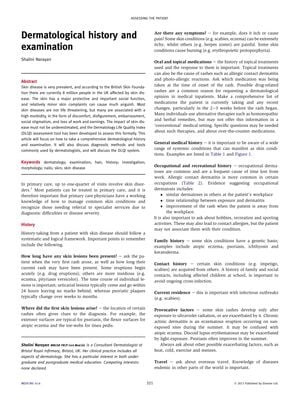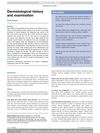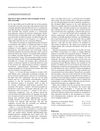Dermatological History and Examination
June 2013
in “
Medicine
”

TLDR A thorough skin history and full examination are important for diagnosing and understanding the impact of skin diseases.
The 2013 document highlights the significance of a thorough dermatological history and examination, noting that skin diseases, while often not life-threatening, can lead to considerable morbidity for the 8 million affected individuals in the UK at the time. It details the systematic approach to history-taking, which includes inquiring about the duration, location, and associated symptoms of skin lesions, as well as medication, general medical, occupational, recreational, family, and contact history, along with factors such as residence, provocative factors, and travel. The examination process is described, emphasizing the need for natural light and full skin examination, with particular attention to hair and nails, which can reveal patterns of alopecia and indicate other medical conditions. Diagnostic tools mentioned include skin biopsy, histological examination, direct immunofluorescence, mycological testing with potassium hydroxide, skin swabs, Wood's light, patch and skin prick testing, and dermatoscopy. The document also discusses the use of quality-of-life measures such as the Dermatology Life Quality Index (DLQI), Psoriasis Disability Index (PDI), Acne Disability Index (ADI), and the Children's Dermatology Life Quality Index (CDLQI) to evaluate the impact of skin diseases on patients.





